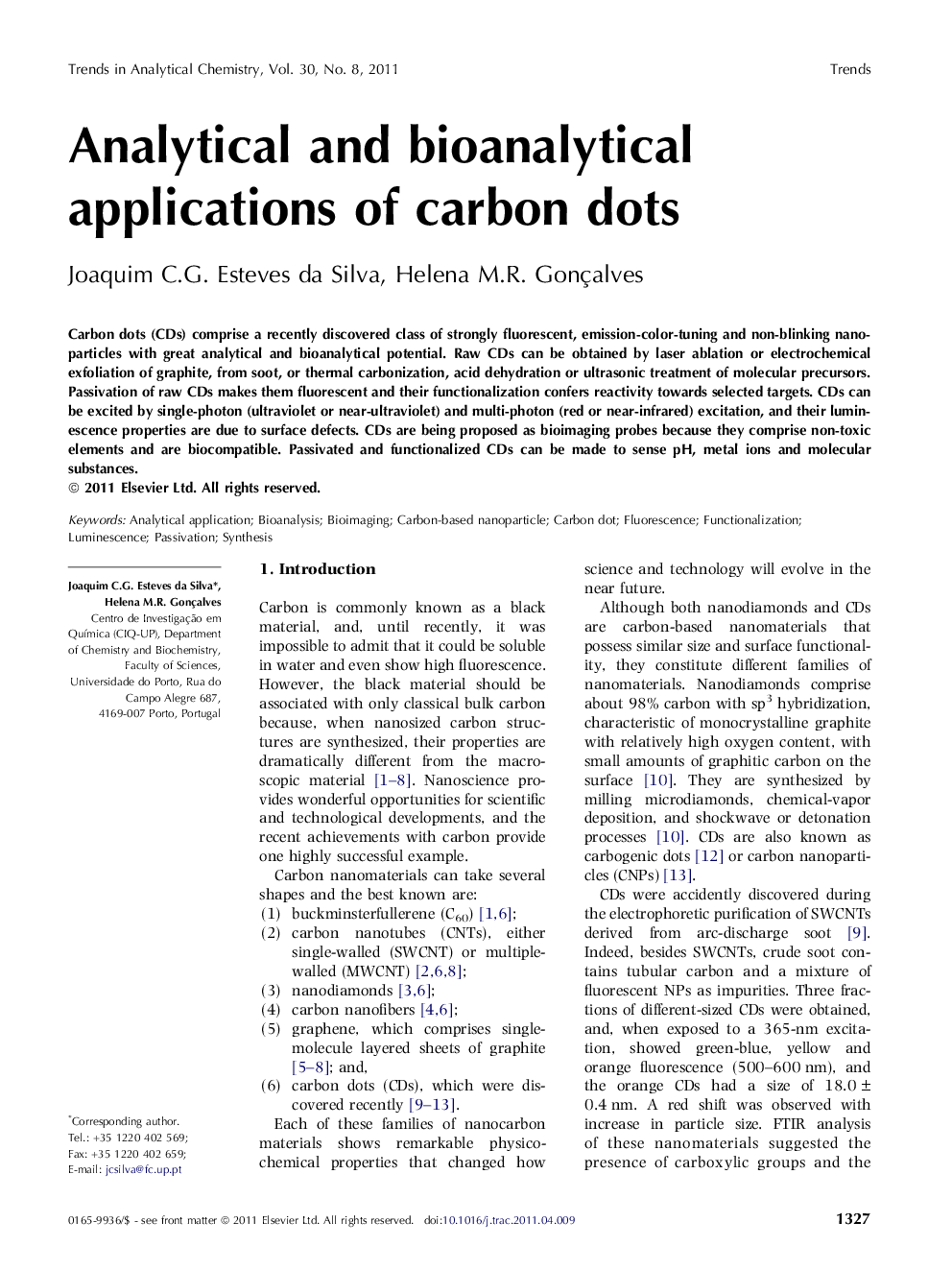| Article ID | Journal | Published Year | Pages | File Type |
|---|---|---|---|---|
| 1248220 | TrAC Trends in Analytical Chemistry | 2011 | 10 Pages |
Carbon dots (CDs) comprise a recently discovered class of strongly fluorescent, emission-color-tuning and non-blinking nanoparticles with great analytical and bioanalytical potential. Raw CDs can be obtained by laser ablation or electrochemical exfoliation of graphite, from soot, or thermal carbonization, acid dehydration or ultrasonic treatment of molecular precursors. Passivation of raw CDs makes them fluorescent and their functionalization confers reactivity towards selected targets. CDs can be excited by single-photon (ultraviolet or near-ultraviolet) and multi-photon (red or near-infrared) excitation, and their luminescence properties are due to surface defects. CDs are being proposed as bioimaging probes because they comprise non-toxic elements and are biocompatible. Passivated and functionalized CDs can be made to sense pH, metal ions and molecular substances.
